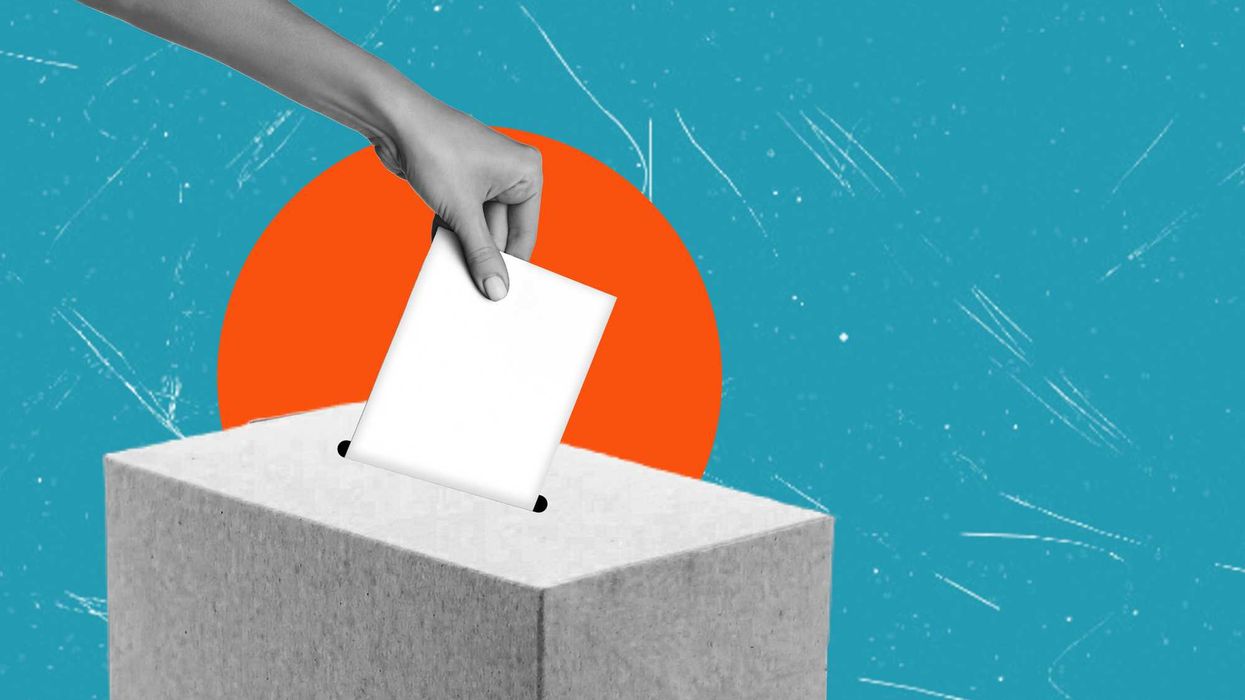Klug served in the House of Representatives from 1991 to 1999. He hosts the political podcast “ Lost in the Middle: America’s Political Orphans.”
If you live in a battleground state, here’s a little nugget to ruin your week.
Reuters says political advertising in the upcoming campaigns will be up more than 25 percent from 2020 and will likely exceed $13 billion. The radio, TV and internet bombardment is just around the corner for swing state voters.
They are already heading for the air raid shelters inErie, Pa., as the barrage rains down from the skies in the bellwether county. Since 2008 there have been 25 statewide elections in Pennsylvania, and this northwestern corner has picked the winner 92 percent of the time.
Mary Buchert, an Erie swing voter, is one of the “political orphans” featured in my podcast, “Lost in the Middle.” She freely admits she hates the ads but finds herself staring at them. “It’s like rubbernecking at an accident, “she said.
In 2022, Pennsylvania Democrats launched a new dangerous strategy that was soon deployed nationwide. During the gubernatorial primary race that year, they spent millions against the moderate Republican campaigning – in order to ensure their candidate would run against a Trump acolyte in the general election.
When they used the same tactics to beat a moderate Michigan Republican who voted to impeach Donald Trump, a cadre of prominent Democrats wrote to the national Democratic Party saying it was a very risky gamble.
Former Indiana Rep. Tim Roemer was a leader of the pushback. “To me it’s wrong on so many levels. Why would we risk promoting an election denier? Keep playing this game and you will eventually lose.”
But his warnings went unheeded this spring when the Democrats played the same cards to help a Trumper win the Republican Senate primary in Ohio.
Erie businessman Tim Wachter is delighted he won’t see all of the negative ads this cycle. Once very active in politics, the 2022 election drove him to cancel his cable.
“Once you extract yourself from all of it, it’s really quite liberating,” he said.
Ugly campaign ads and car wrecks: Why we can't turn away by Scott Klug
Read on Substack


















A deep look at how "All in the Family" remains a striking mirror of American politics, class tensions, and cultural manipulation—proving its relevance decades later.
All in This American Family
There are a few shows that have aged as eerily well as All in the Family.
It’s not just that it’s still funny and has the feel not of a sit-com, but of unpretentious, working-class theatre. It’s that, decades later, it remains one of the clearest windows into the American psyche. Archie Bunker’s living room has been, as it were, a small stage on which the country has been working through the same contradictions, anxieties, and unresolved traumas that still shape our politics today. The manipulation of the working class, the pitting of neighbor against neighbor, the scapegoating of the vulnerable, the quiet cruelties baked into everyday life—all of it is still here with us. We like to reassure ourselves that we’ve progressed since the early 1970s, but watching the show now forces an unsettling recognition: The structural forces that shaped Archie’s world have barely budged. The same tactics of distraction and division deployed by elites back then are still deployed now, except more efficiently, more sleekly.
Archie himself is the perfect vessel for this continuity. He is bigoted, blustery, reactive, but he is also wounded, anxious, and constantly misled by forces above and beyond him. Norman Lear created Archie not as a monster to be hated (Lear’s genius was to make Archie lovable despite his loathsome stands), but as a man trapped by the political economy of his era: A union worker who feels his country slipping away, yet cannot see the hands that are actually moving it. His anger leaks sideways, onto immigrants, women, “hippies,” and anyone with less power than he has. The real villains—the wealthy, the connected, the manufacturers of grievance—remain safely and comfortably offscreen. That’s part of the show’s key insight: It reveals how elites thrive by making sure working people turn their frustrations against each other rather than upward.
Edith, often dismissed as naive or scatterbrained, functions as the show’s quiet moral center. Her compassion exposes the emotional void in Archie’s worldview and, in doing so, highlights the costs of the divisions that powerful interests cultivate. Meanwhile, Mike the “Meathead” represents a generation trying to break free from those divisions but often trapped in its own loud self-righteousness. Their clashes are not just family arguments but collisions between competing visions of America’s future. And those visions, tellingly, have yet to resolve themselves.
The political context of the show only sharpens its relevance. Premiering in 1971, All in the Family emerged during the Nixon years, when the “Silent Majority” strategy was weaponizing racial resentment, cultural panic, and working-class anxiety to cement power. Archie was a fictional embodiment of the very demographic Nixon sought to mobilize and manipulate. The show exposed, often bluntly, how economic insecurity was being rerouted into cultural hostility. Watching the show today, it’s impossible to miss how closely that logic mirrors the present, from right-wing media ecosystems to politicians who openly rely on stoking grievances rather than addressing root causes.
What makes the show unsettling today is that its satire feels less like a relic and more like a mirror. The demagogic impulses it spotlighted have simply found new platforms. The working-class anger it dramatized has been harvested by political operatives who, like their 1970s predecessors, depend on division to maintain power. The very cultural debates that fueled Archie’s tirades — about immigration, gender roles, race, and national identity—are still being used as tools to distract from wealth concentration and political manipulation.
If anything, the divisions are sharper now because the mechanisms of manipulation are more sophisticated, for much has been learned by The Machine. The same emotional raw material Lear mined for comedy is now algorithmically optimized for outrage. The same social fractures that played out around Archie’s kitchen table now play out on a scale he couldn’t have imagined. But the underlying dynamics haven’t changed at all.
That is why All in the Family feels so contemporary. The country Lear dissected never healed or meaningfully evolved: It simply changed wardrobe. The tensions, prejudices, and insecurities remain, not because individuals failed to grow but because the economic and political forces that thrive on division have only become more entrenched. Until we confront the political economy that kept Archie and Michael locked in an endless loop of circular bickering, the show will remain painfully relevant for another fifty years.
Ahmed Bouzid is the co-founder of The True Representation Movement.